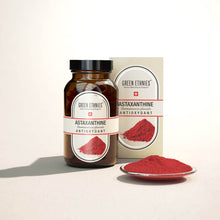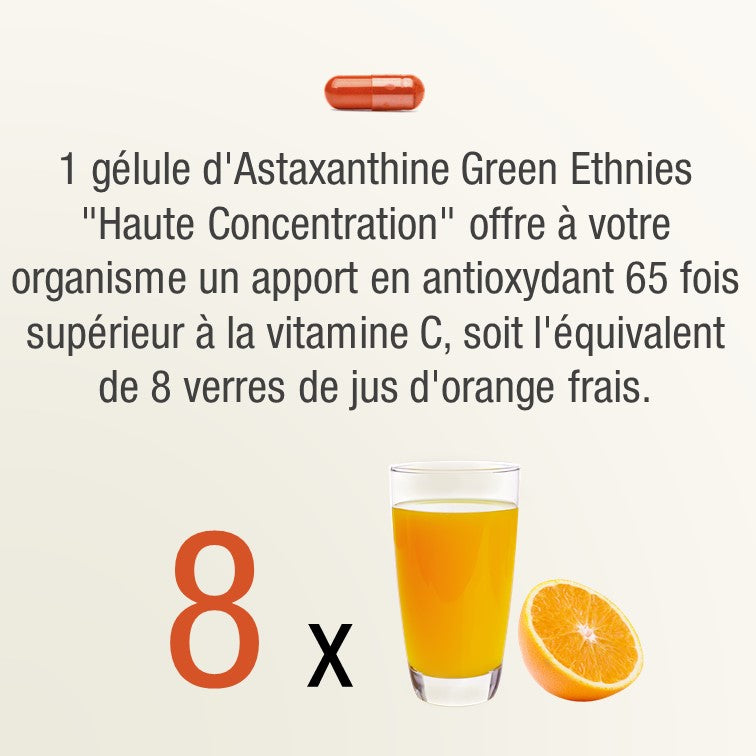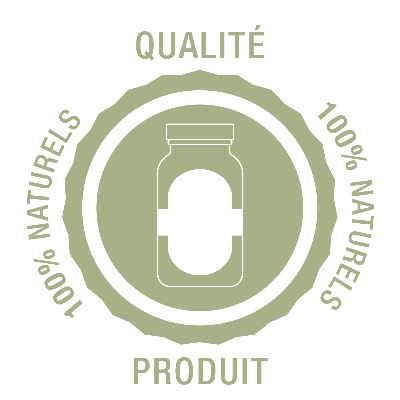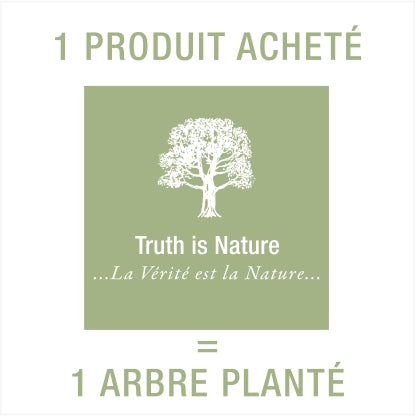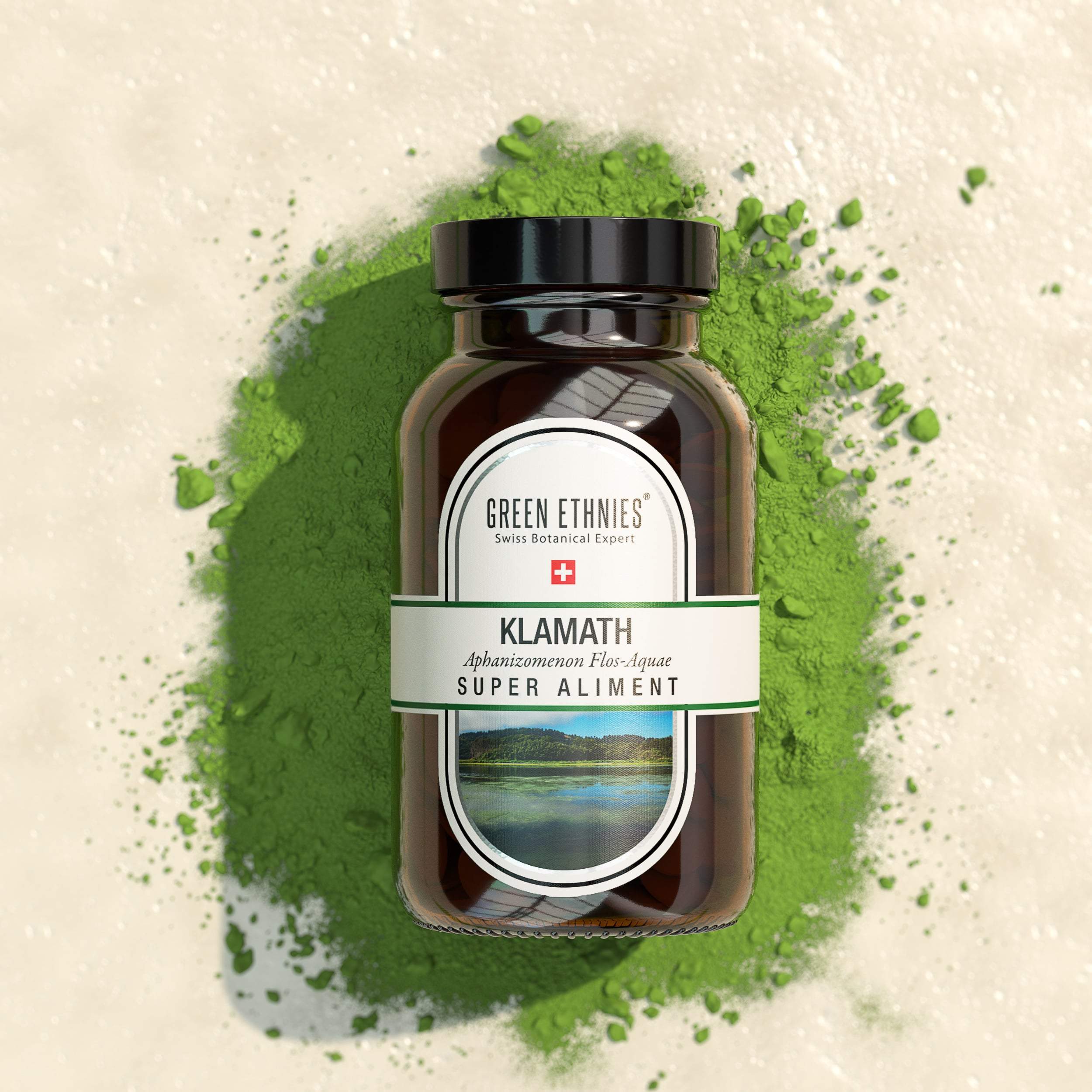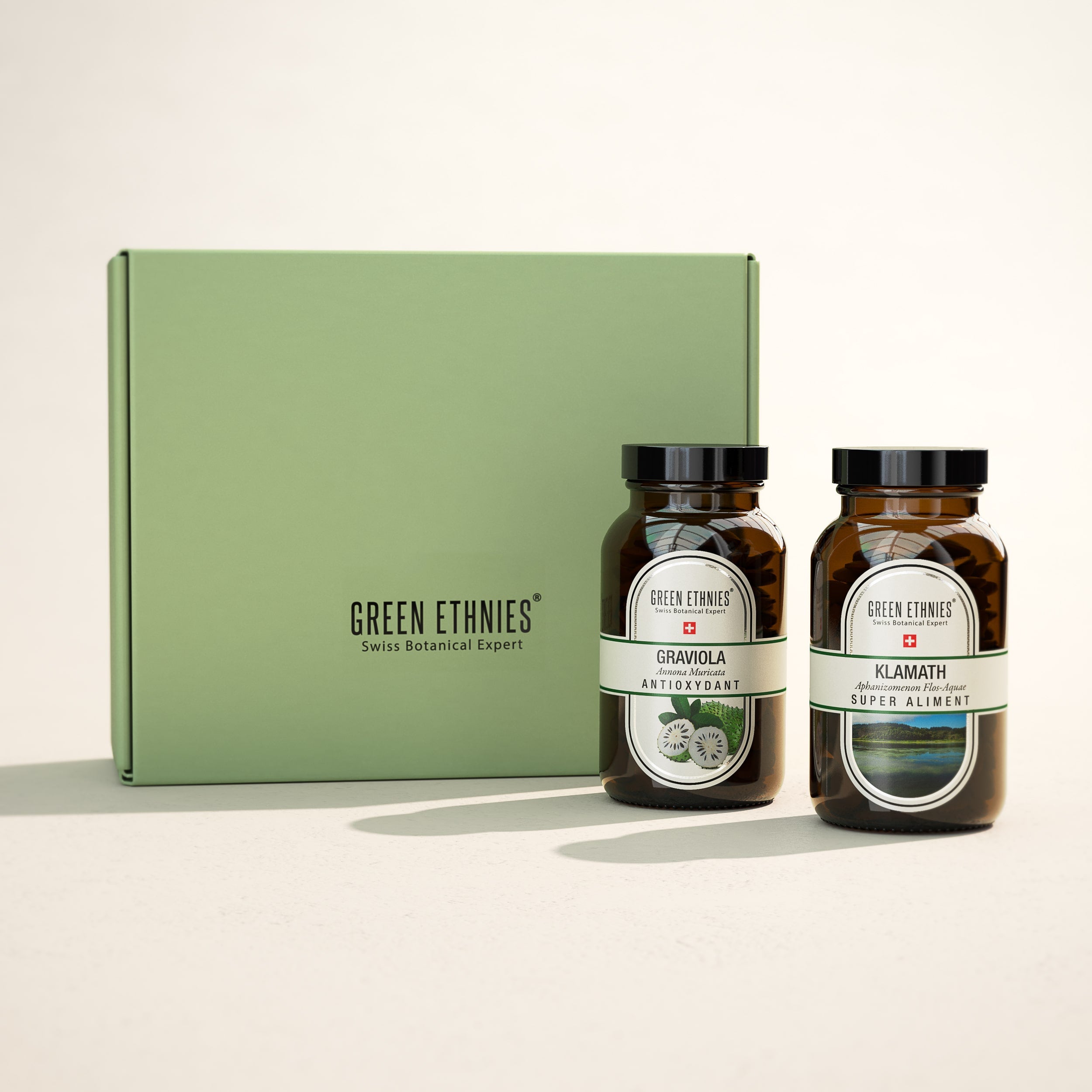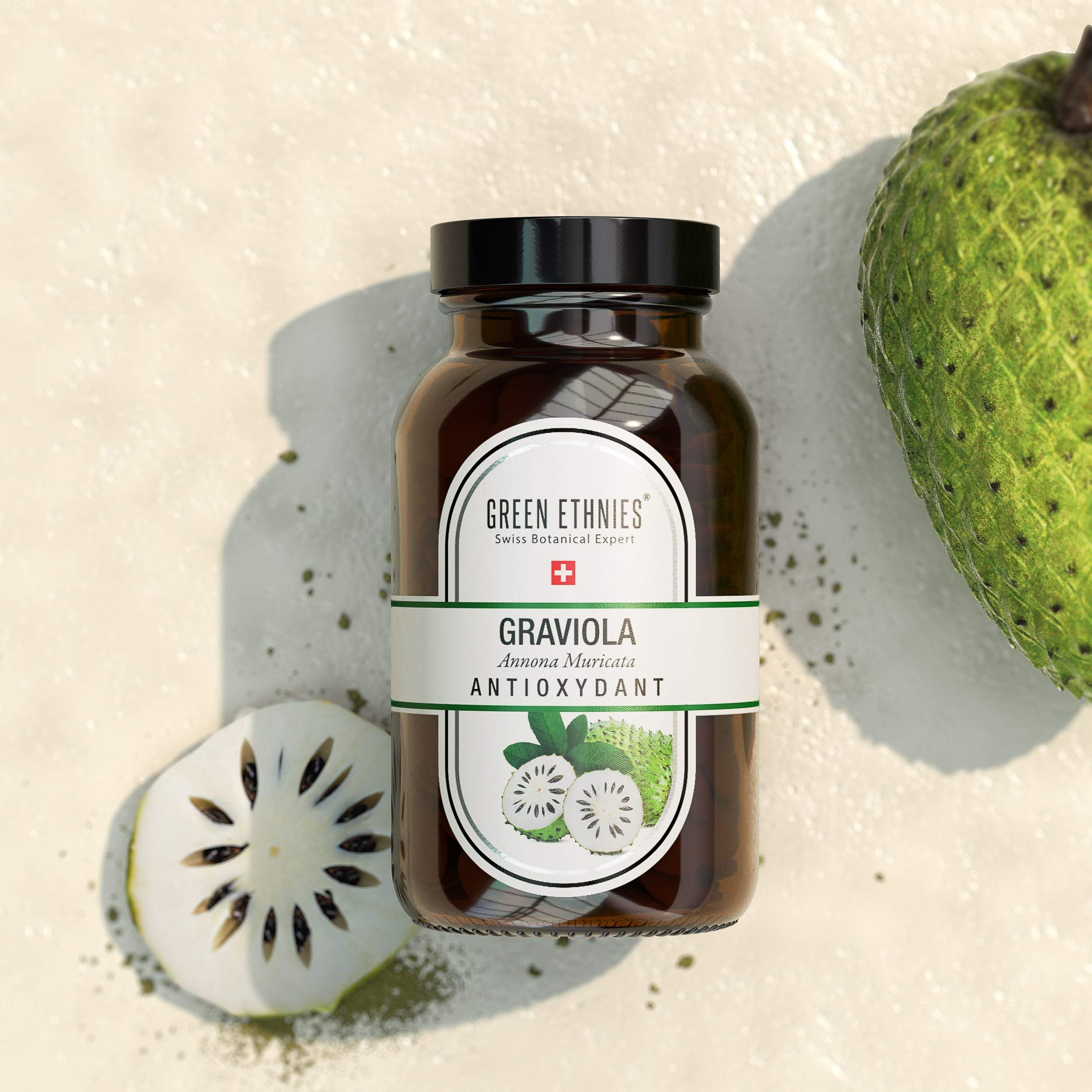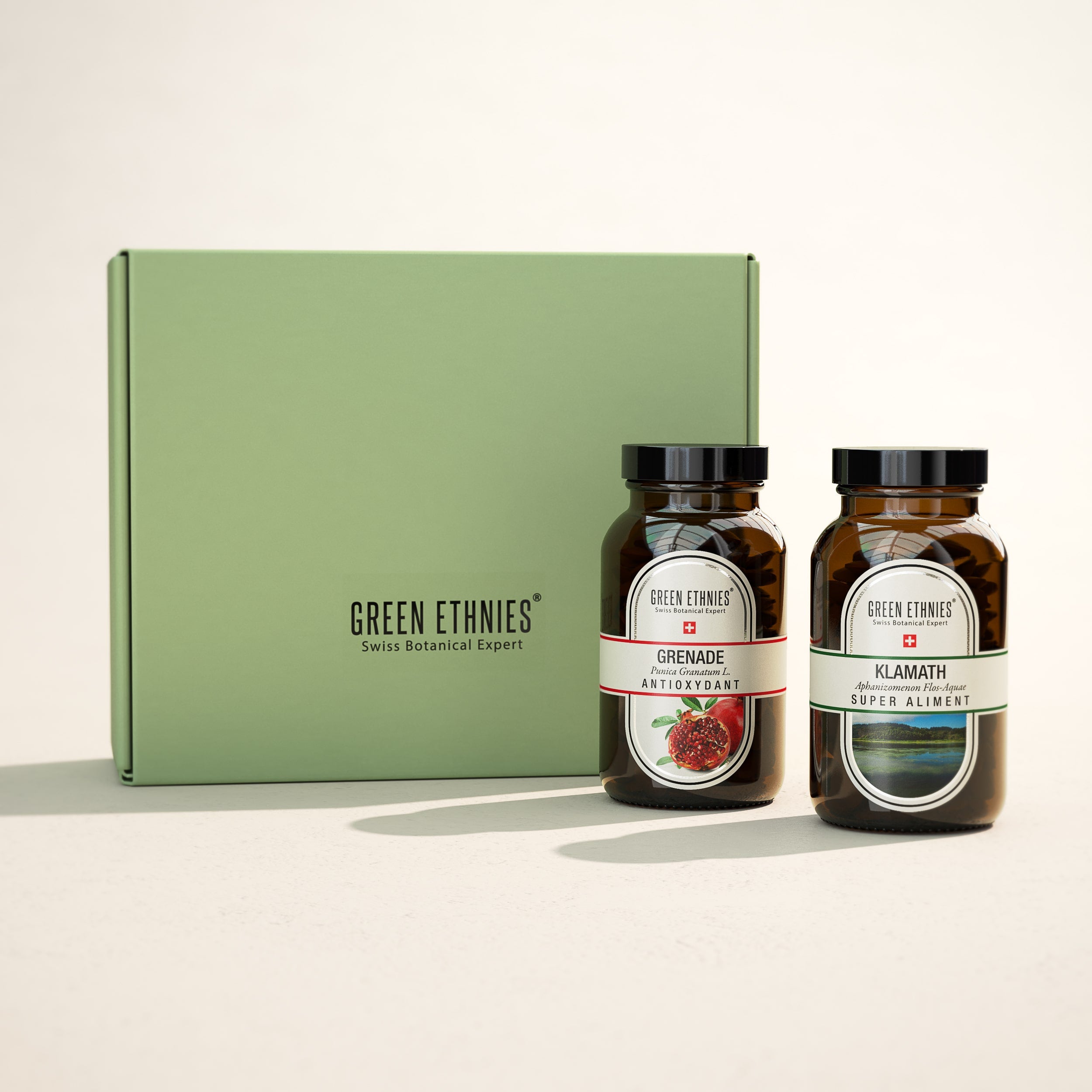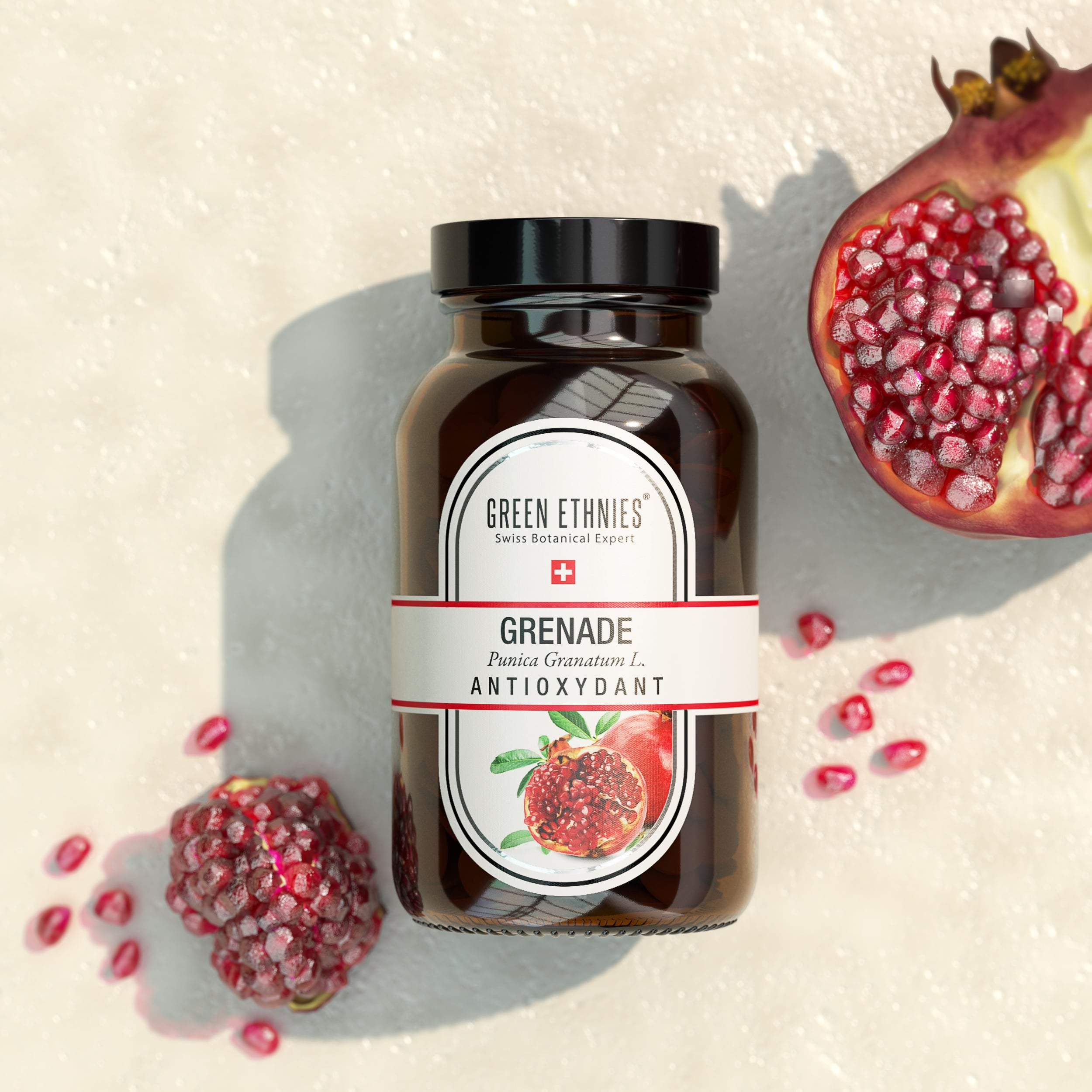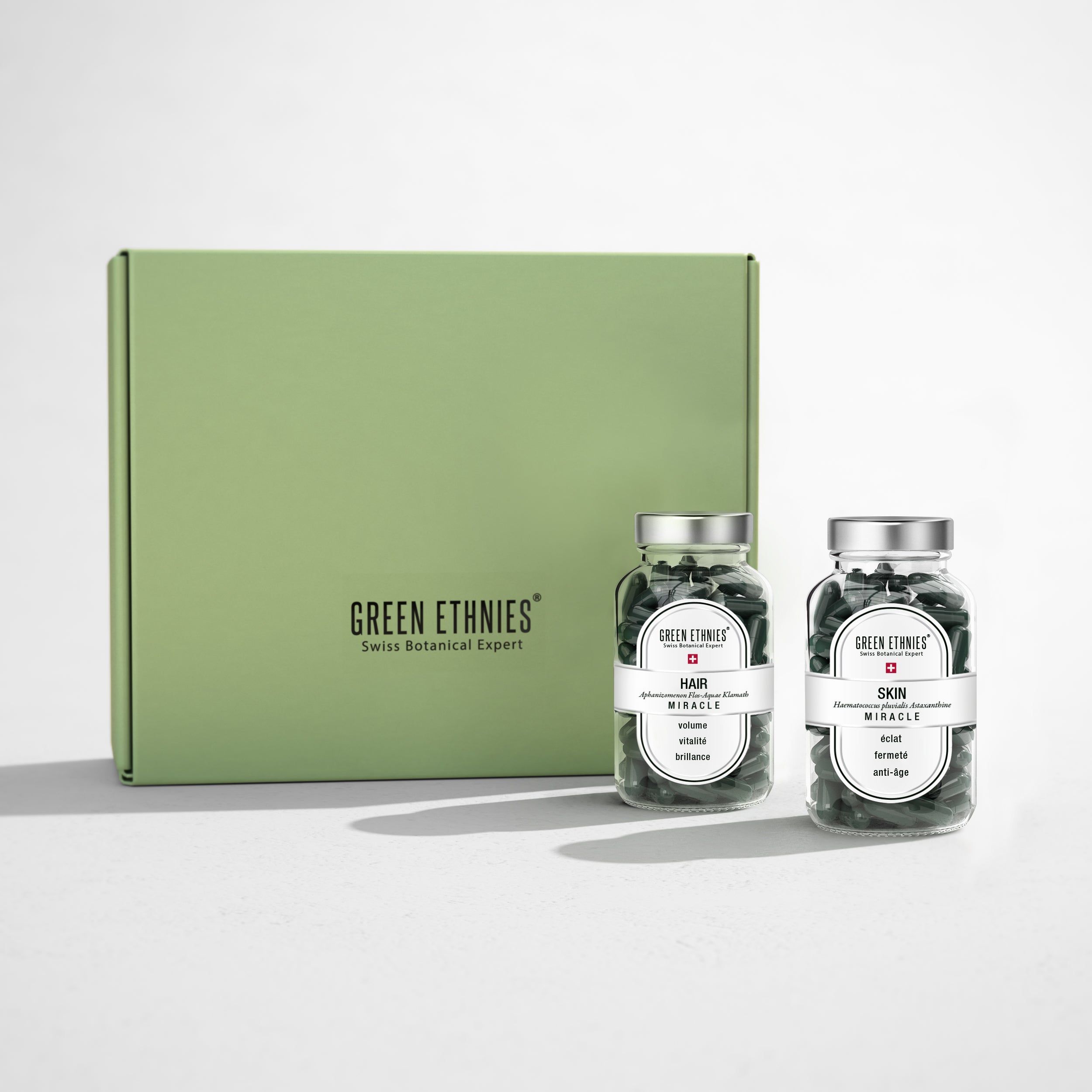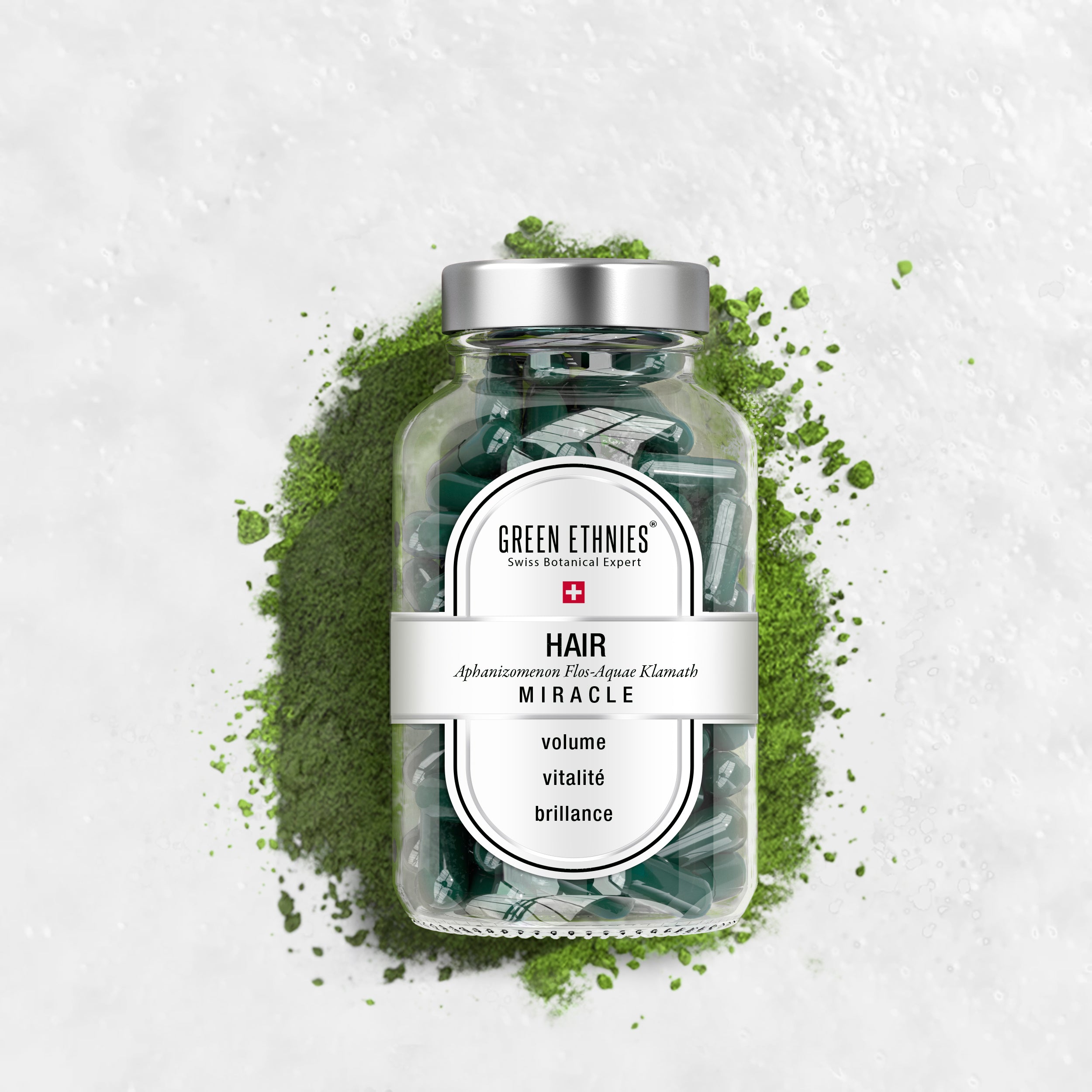L’Astaxanthine est considérée comme l’un des plus puissants antioxydants, car c’est la seule molécule capable de protéger la totalité de la cellule. L’Astaxanthine naturelle de Green Ethnies est extraite de la micro-algue Haematococcus pluvialis.
- Protection de la peau
- Santé des yeux
- Performance sportive
- Anti-inflammatoire
- Neuroprotecteur
1 gélule par jour
LIVRAISON GRATUITE
PAIEMENT SÉCURISÉ
SERVICE CLIENT À VOTRE ÉCOUTE
Complément alimentaire d'astaxanthine naturelle issue de la micro-algue Haematococcus pluvialis, cultivée sans pesticide ni produit chimique.
Haute concentration d’actifs : 8 mg / gélule.
Haute biodisponibilité.
Gélules végétales.
Sans excipient, sans gluten, sans caséine, sans levure, sans maïs, sans soja, sans OGM.

Pilulier 60 gélules
Extrait d'Haematococcus Pluvialis 160 mg
dont 8 mg d'Astaxanthine
Acérola BIO 70 mg
dont 12 mg de Vitamine C
Fibres d’acacia BIO (prébiotiques) 330 mg
Gélule en écorce de pin (HPMC)
Tous les ingrédients sont d’origine 100% naturelle, sans pesticide ni produit chimique
L’Astaxanthine est le seul antioxydant capable de protéger la totalité de la structure cellulaire contre les dommages oxydatifs.
La reine des caroténoïdes
- La découverte de l’Astaxanthine remonte à 1938, à partir d’un extrait de homard.
- Cette molécule est fabriquée notamment par des algues unicellulaires.
- C’est le seul antioxydant capable de protéger la totalité de la cellule (parois internes et externes).
- Elle serait deux fois mieux absorbée par les cellules rétiniennes que les autres caroténoïdes.
- L’Astaxanthine aurait un pouvoir antioxydant :
65 fois supérieur à la vitamine C
54 fois supérieur au bêta-carotène
15 fois supérieur à la vitamine E
20 plus élevé que l’Astaxanthine synthétique
Axes Santé
Dans la nature, l’Astaxanthine sert à protéger ces micro-algues lorsqu'elles subissent un stress destructeur. Soumises à des conditions extrêmes, ces micro-algues vont spontanément mettre en place un mécanisme naturel d'autodéfense en produisant de l'Astaxanthine qui va agir comme un bouclier pour les protéger. Dans notre organisme, l’Astaxanthine joue le même rôle protecteur.
« As we discussed previously, AX is a potent antioxidant which stimulates and modulates the immune system. These effects are capable of preventing or delaying sunburns. »
Higuera-Ciapara I, Felix-Valenzuela L, and Goycoolea F M, ''Astaxanthin: a review of its chemistry and applications.'' Critical reviews in food science and nutrition. 2006; 46(2) : 185-196.
Parce qu’elle est soluble dans la graisse, l’Astaxanthine a une affinité particulière avec les membranes cellulaires, en particulier la double membrane cellulaire des tissus musculaires des yeux. Elle permettrait de réduire le risque de cataracte ainsi que la formation de la dégénérescence maculaire liée à l’âge (DMLA).
« Astaxanthin shows its benefical effects in a variety of ocular conditions including improvement in papillary constriction potential, increase in choroidal blood flow velocity, protection against progression of both dry and wet type of age related macular degeneration and glaucoma. »
Fakhri S et al.,''Astaxanthin: A mechanistic review on its biological activities and health benefits.'' Pharmacological research. 2018; 136 : 1-20.
« Astaxanthin is an effective agent for the improvement of muscle fatigue and also enhances sports performance. »
Fakhri S et al., ''Astaxanthin: A mechanistic review on its biological activities and health benefits.'' Pharmacological research. 2018; 136 : 1-20.
« The anti-inflammatory effects of AST play an important role in preventing the progression of disorders of the central nervous system vis-à-vis its biological effects. »
Fakhri S et al., ''Astaxanthin: A mechanistic review on its biological activities and health benefits.'' Pharmacological research. 2018; 136 : 1-20.
« In conclusion, the results suggested that astaxanthin-rich Haematococcus pluvialis extract improves cognitive function in the healthy aged individuals. »
Katagiri M et al., ''Effects of astaxanthin-rich Haematococcus pluvialis extract on cognitive function: a randomised, double-blind, placebo-controlled study.'' Journal of clinical biochemistry and nutrition. 2011 : 1203270150-1203270150.
Astaxanthin reduced the daily sense of fatigue caused by both mental and physical loads.
Hongo N et al., ''Daily Fatigue—reducing Effect of Astaxanthin―A Randomized, Placebo—controlled, Double—blind, Parallel—group Study―.'' 薬理と治療. 2017; 45(1): 61-72.
« It has been reported that it has a antioxidant activity, as high as 10 times more than other carotenoids such as zeaxanthin, lutein, canthaxantin, and β-carotene; and 100 times more that α-tocopherol. »
Higuera-Ciapara I, Felix-Valenzuela L, and Goycoolea F M, ''Astaxanthin: a review of its chemistry and applications.'' Critical reviews in food science and nutrition. 2006; 46(2) : 185-196.
« The observation that these pregnancies occurred within the time period of 3 months after initiation of Astaxanthin intake, among couples with an average duration of infertility of more than 20 months, is suggestive for a causal link with the antioxidant supplementation. »
Comhaire FH et al., ''Combined conventional/antioxidant “Astaxanthin“ treatment for male infertility: a double blind, randomized trial.'' Asian journal of andrology. 2005; 7(3) : 257-262.
Dans la nature, l’Astaxanthine sert à protéger ces micro-algues lorsqu'elles subissent un stress destructeur. Soumises à des conditions extrêmes, ces micro-algues vont spontanément mettre en place un mécanisme naturel d'autodéfense en produisant de l'Astaxanthine qui va agir comme un bouclier pour les protéger. Dans notre organisme, l’Astaxanthine joue le même rôle protecteur.
« As we discussed previously, AX is a potent antioxidant which stimulates and modulates the immune system. These effects are capable of preventing or delaying sunburns. »
Higuera-Ciapara I, Felix-Valenzuela L, and Goycoolea F M, ''Astaxanthin: a review of its chemistry and applications.'' Critical reviews in food science and nutrition. 2006; 46(2) : 185-196.
Parce qu’elle est soluble dans la graisse, l’Astaxanthine a une affinité particulière avec les membranes cellulaires, en particulier la double membrane cellulaire des tissus musculaires des yeux. Elle permettrait de réduire le risque de cataracte ainsi que la formation de la dégénérescence maculaire liée à l’âge (DMLA).
« Astaxanthin shows its benefical effects in a variety of ocular conditions including improvement in papillary constriction potential, increase in choroidal blood flow velocity, protection against progression of both dry and wet type of age related macular degeneration and glaucoma. »
Fakhri S et al.,''Astaxanthin: A mechanistic review on its biological activities and health benefits.'' Pharmacological research. 2018; 136 : 1-20.
« Astaxanthin is an effective agent for the improvement of muscle fatigue and also enhances sports performance. »
Fakhri S et al., ''Astaxanthin: A mechanistic review on its biological activities and health benefits.'' Pharmacological research. 2018; 136 : 1-20.
« The anti-inflammatory effects of AST play an important role in preventing the progression of disorders of the central nervous system vis-à-vis its biological effects. »
Fakhri S et al., ''Astaxanthin: A mechanistic review on its biological activities and health benefits.'' Pharmacological research. 2018; 136 : 1-20.
« In conclusion, the results suggested that astaxanthin-rich Haematococcus pluvialis extract improves cognitive function in the healthy aged individuals. »
Katagiri M et al., ''Effects of astaxanthin-rich Haematococcus pluvialis extract on cognitive function: a randomised, double-blind, placebo-controlled study.'' Journal of clinical biochemistry and nutrition. 2011 : 1203270150-1203270150.
Astaxanthin reduced the daily sense of fatigue caused by both mental and physical loads.
Hongo N et al., ''Daily Fatigue—reducing Effect of Astaxanthin―A Randomized, Placebo—controlled, Double—blind, Parallel—group Study―.'' 薬理と治療. 2017; 45(1): 61-72.
« It has been reported that it has a antioxidant activity, as high as 10 times more than other carotenoids such as zeaxanthin, lutein, canthaxantin, and β-carotene; and 100 times more that α-tocopherol. »
Higuera-Ciapara I, Felix-Valenzuela L, and Goycoolea F M, ''Astaxanthin: a review of its chemistry and applications.'' Critical reviews in food science and nutrition. 2006; 46(2) : 185-196.
« The observation that these pregnancies occurred within the time period of 3 months after initiation of Astaxanthin intake, among couples with an average duration of infertility of more than 20 months, is suggestive for a causal link with the antioxidant supplementation. »
Comhaire FH et al., ''Combined conventional/antioxidant “Astaxanthin“ treatment for male infertility: a double blind, randomized trial.'' Asian journal of andrology. 2005; 7(3) : 257-262.
Quels sont les compléments alimentaires dont j’ai besoin ?
« Que ta nourriture soit ton médicament et que ton médicament soit dans ta nourriture »
Hippocrate, Grèce Antique




